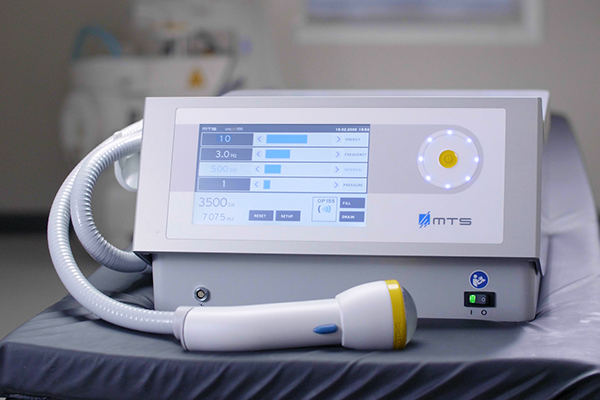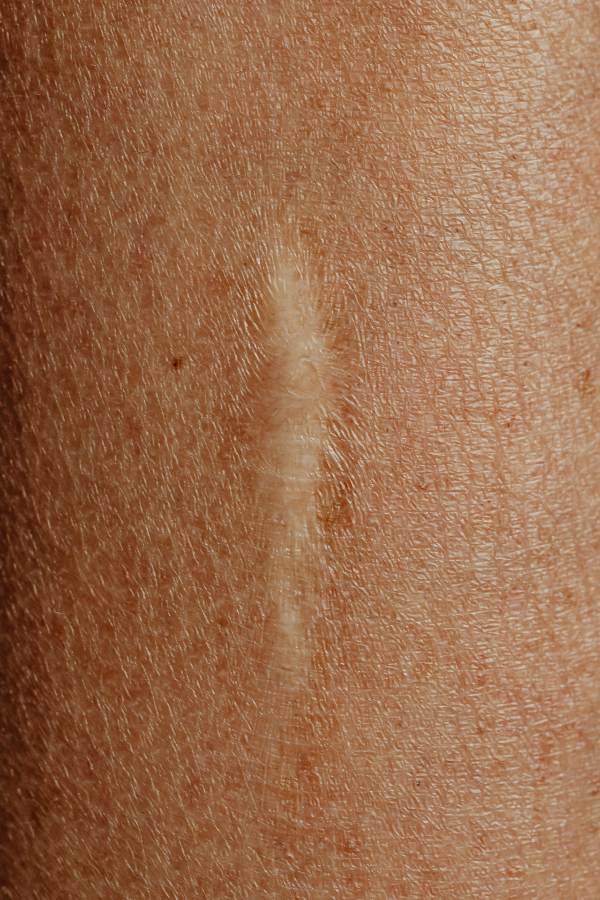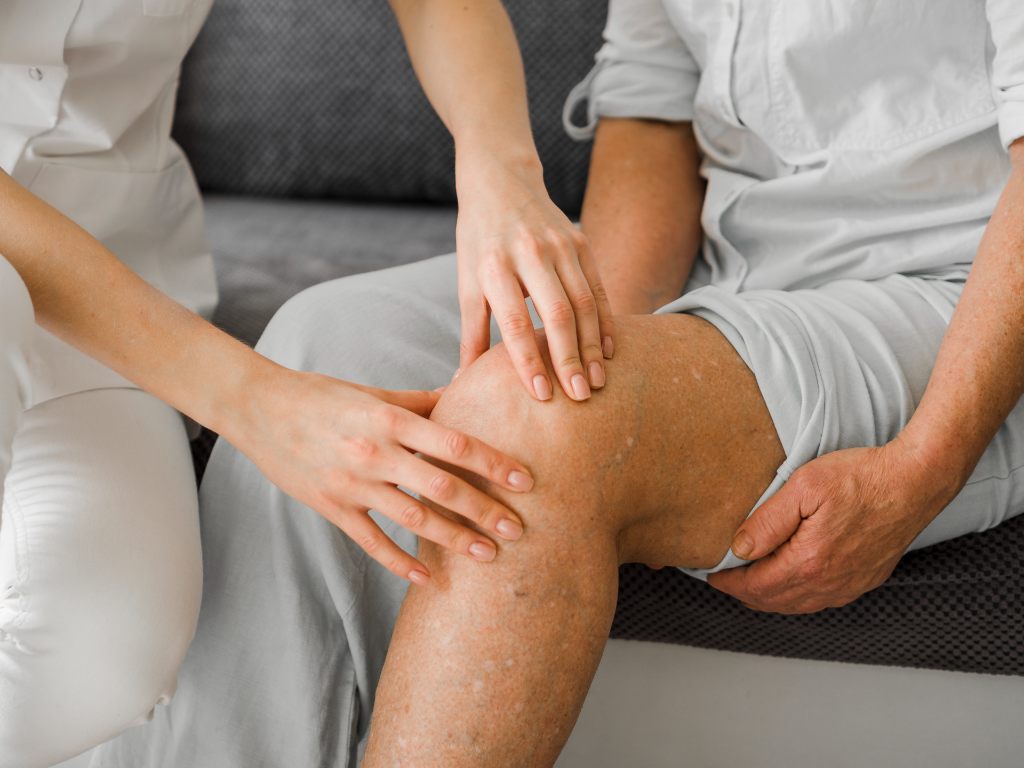Diabetes can affect more than just your blood sugar levels. It often leads to complications throughout the body, including joint pain. One of the most common areas where this pain occurs is in the knees. When blood sugar levels remain elevated for long periods, it can damage nerves and tissues, causing inflammation and discomfort. This damage, coupled with conditions like arthritis and neuropathy, can make even simple movements a struggle. Treating diabetic knee pain is important, not only to relieve discomfort but also to prevent further complications down the road.
What is Diabetic Knee Pain?

Diabetic knee pain refers to discomfort in the knee joint that arises due to complications associated with diabetes. Diabetes impacts the body’s ability to regulate blood sugar, and when glucose levels remain consistently high, it can lead to nerve damage (diabetic neuropathy) and blood vessel damage.
Neuropathy can cause pain, tingling, and a loss of sensation, particularly in the lower extremities, including the knees. Additionally, poor circulation can make it harder for the tissues in the knee to receive adequate oxygen and nutrients. This impaired circulation increases the risk of joint damage and inflammation. Over time, this leads to issues like diabetic osteoarthritis, where the cartilage in the knee joint breaks down more quickly due to inflammation and metabolic imbalances caused by diabetes. Patients with diabetic knee pain may experience stiffness, swelling, and reduced mobility, making daily activities difficult and painful.
In some cases, diabetic patients may also experience Charcot’s joint, a condition where the bones in the foot or knee weaken and fracture without a person even noticing due to nerve damage. While this is less common, it highlights the severity of untreated diabetic knee pain and the importance of specialized care.
New Patient Special
Try SoftWave for just $69 at a clinic near you. No drugs. No surgery. Just relief.

Diabetic Knee Pain Treatments
Effectively managing diabetic knee pain requires a range of treatments that cater to the unique needs of diabetic patients. Here are five commonly recommended treatments that can help alleviate pain and improve mobility.
1. Physical Therapy for Diabetic Knee Pain
Physical therapy is a core component of knee pain management, especially for diabetic patients. A customized physical therapy plan includes exercises and stretches that target the muscles around the knee to improve flexibility and strength. Strengthening the muscles can reduce the strain on the knee joint itself, preventing further wear and tear. Stretching helps alleviate stiffness, which is common in diabetics due to inflammation and decreased mobility. The overall goal of physical therapy is to improve movement and reduce pain without overloading the already compromised knee joint.
2. Pain Management Medications
For short-term relief, pain management medications such as NSAIDs (non-steroidal anti-inflammatory drugs) or acetaminophen can be effective in reducing inflammation and pain. These medications help by reducing the inflammatory response in the knee, which alleviates pain and improves function. However, diabetic patients must be cautious. Some medications, particularly NSAIDs, can have side effects that may exacerbate existing conditions, such as kidney issues or gastrointestinal problems. Always consult your healthcare provider before using these medications regularly.
3. Orthotic Devices for Diabetic Knee Support
Orthotic devices like knee braces, insoles, or even specially designed shoes can be extremely helpful for diabetic patients suffering from knee pain. These devices help redistribute pressure away from the affected knee, reducing the strain on the joint. A properly fitted knee brace can provide stability and support while helping to relieve pain during daily activities. Orthotic devices are particularly useful for patients who experience joint instability due to muscle weakness or inflammation. Many of these devices can be customized to suit the specific needs of the individual, making them a valuable tool in diabetic knee pain management.
4. Injections (Corticosteroids or Hyaluronic Acid)
Injections can provide temporary relief for knee pain. Corticosteroid injections work by reducing inflammation in the knee joint, offering relief from pain and swelling for weeks or months. Hyaluronic acid injections, on the other hand, are used to supplement the fluid within the knee joint, providing more lubrication and cushioning, which helps improve mobility and reduce discomfort. However, these treatments come with their own risks, especially for diabetic patients. Steroid injections can raise blood sugar levels in some patients, so it’s important for patients to closely monitor their glucose levels after treatment. Your healthcare provider can help determine whether injections are a suitable option for your condition.
5. SoftWave Therapy: Advanced Pain Relief for Diabetic Knee Pain
SoftWave Therapy is an advanced type of shockwave for knee pain and various indications including diabetic knee pain. Using broad-focused, low-intensity shockwaves, SoftWave Therapy stimulates the body’s natural healing processes. This therapy works by promoting tissue regeneration, improving blood flow, and reducing inflammation, all of which are key in addressing knee pain for diabetic patients.
The shockwaves create a biological response in the tissues, prompting the release of healing factors like cytokines and growth factors. This helps repair damaged tissue, reduce inflammation, and increase blood circulation, which is often compromised in diabetic patients. The increased blood flow enhances nutrient delivery to the damaged tissues, promoting faster healing. SoftWave Therapy is particularly beneficial for patients who want to avoid the risks of surgery or long-term medication use. It has been shown to provide lasting relief for both acute and chronic pain, offering a safer alternative for diabetic patients looking for effective knee pain treatment.
Lifestyle Modifications to Support Diabetic Knee Pain Treatment

Managing diabetic knee pain goes beyond medical treatments. Lifestyle modifications play a key role in alleviating pain and preventing further damage. Making certain changes to your daily routine can reduce pressure on your joints, improve circulation, and help your body heal more effectively. These adjustments, alongside proper medical care, can significantly enhance your overall quality of life. Here are some lifestyle modifications that can support diabetic knee pain treatment:
- Maintain a Healthy Weight
Carrying excess weight increases the strain on your knee joints, leading to more pain and inflammation. Losing weight can help reduce pressure on the knees, making movement easier and less painful. - Control Blood Sugar Levels
Keeping your blood sugar levels in check is crucial for preventing further damage to the joints and nerves. Proper blood sugar management can also reduce inflammation, making it easier to manage knee pain. - Incorporate Low-Impact Exercises
Engage in light, low-impact exercises like swimming, cycling, or walking to strengthen the muscles around your knee without putting too much stress on the joint. These activities can improve mobility and reduce stiffness. - Eat a Balanced Diet
A healthy diet that includes anti-inflammatory foods can help manage both your blood sugar levels and knee pain. Focus on nutrient-rich foods that support joint health and weight management. - Monitor Blood Sugar Regularly
Regularly checking your blood sugar levels helps you stay on track with your diabetes management. Consistent monitoring can prevent complications that may worsen knee pain, such as nerve or joint damage.
Incorporating these lifestyle changes can provide added support to your diabetic knee pain treatment plan, helping you live with less discomfort and improved mobility.
New Patient Special
Try SoftWave for just $69 at a clinic near you. No drugs. No surgery. Just relief.

Finding the Right Diabetic Knee Pain Treatment for You
If you are struggling with diabetic knee pain, it’s important to explore treatment options early to prevent further complications. From physical therapy and medications to innovative treatments like SoftWave Therapy, there are several ways to manage pain and restore mobility. Consult with your healthcare provider to create a personalized treatment plan that fits your specific needs and helps you regain control over your life. Finding the right diabetic knee pain treatment can make all the difference, helping you live a more comfortable and active life.
The Best Shockwave Therapy for Back of Diabetic Knee Pain
Are you looking for safe, reliable, and effective relief from diabetic knee pain?
SoftWave therapy is FDA-cleared, patented, and nationally recognized for its leading tissue regeneration technology. Unlike other types of high-energy shockwave treatments, SoftWave is the only shockwave therapy on the market that uses true broad-focused shock waves that treat larger and deeper areas of tissue.
Thousands of patients have experienced the benefits of SoftWave for knee pain, including:
- Little to no side effects
- Short treatment time
- Quick recovery
- Long-lasting results
Find a SoftWave Therapy provider near you or learn more about SoftWave and whether or not you’re eligible for full treatment today!
Disclaimer: The information provided in this blog is for educational and informational purposes only and is not intended as a substitute for professional medical advice, diagnosis, or treatment. The content provided in this blog should not be used to diagnose or treat any health problems or illnesses. Always consult with a qualified healthcare professional before making any changes to your healthcare routine or treatment plan.
New Patient Special
Try SoftWave for just $69 at a clinic near you and learn if you’re a candidate for full treatment





